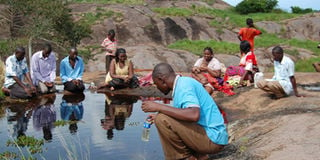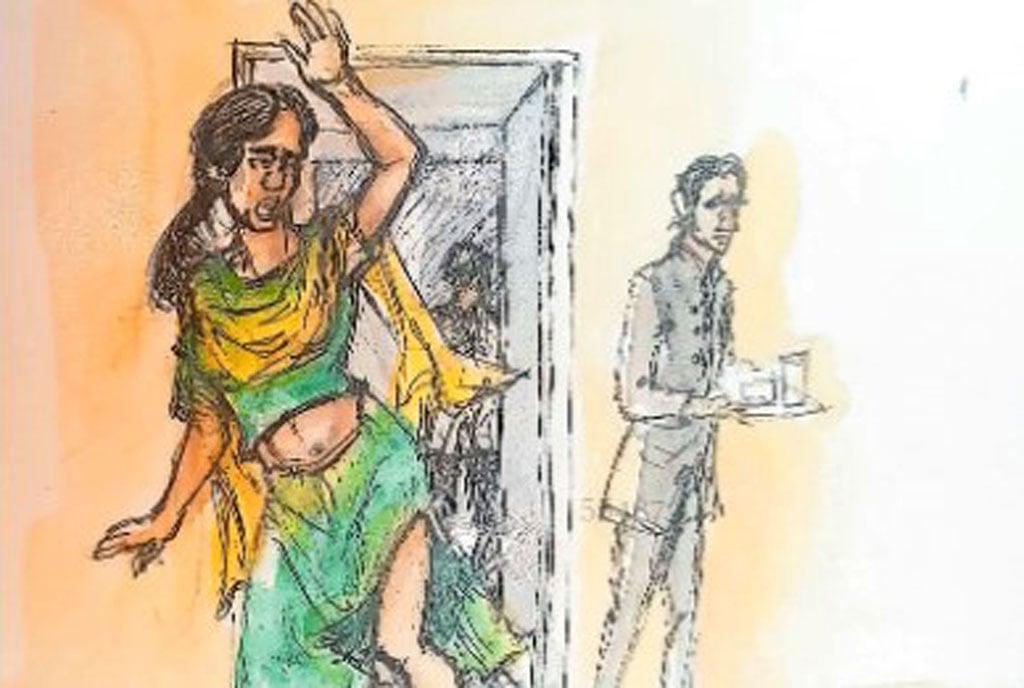Prime
Climbing Kagulu hill of mystery

Visitors to the site pray at the “Well of life” on the hill. Photo by Sam Caleb Opio
What you need to know:
ADVENTURE. Kagulu Hill in Buyende District where the founding father of Busoga’s royal house, rested after crossing to Busoga from Bunyoro on Lake Kyoga is fast becoming a must visit tourist site in Busoga.
On Saturday, May 11, I was one of the thousands who traveled to Kagulu for a hill climbing challenge organised by the Busoga Cultural Tourism Initiative. The hill is subject of many mysterious tales, a number of which I had heard before the challenge. It is said that the last ritual during the installment of Busoga’s Kyabazinga is done here- he has to climb the hill and if he fails, he is not the right Kyabazinga. A multicoloured snake with two heads is said to inhabit the hill and guard it together with a leopard.
Shiny rocks and caves
With anxiety we started our climb uphill. As we moved closer, the hill seemed to be moving farther away. It has a staircase on the southern side, built on the orders of President Idi Amin who was enchanted by the clear view it gave of neighbouring districts in Busoga, Teso and Lango regions. The staircase was one of two options of reaching the top of the hill, the other, climbing it from the northern side.
The journey to the top takes you past six small rocks which tradition says are Mukama’s wives; Kagweere, Bukolimo, Butadewo, Mpanga, Kagweese and Muwaale. The summit of the hill, 10,000 feet above sea level, is home to a number of shiny black and grey rocks and caves which are now habitats to primates. However according to folklore, these caves once offered sanctuary to early settlers in Busoga.
An aged woman Mandwa Kagulu Nabiryo, who is said to be an oracle haunted by the 45 spirits that own and patrol the hill, has a shrine at its top. There are also two wells, and a dugout canoe and an oar said to belong to Nabiryo. Etched into the rock are a man’s foot, a spear and dog which were allegedly drawn by the spirits.
A small lake at the summit attracts people from all over Busoga who believes it gives good fortune. Kagulu residents claim that the lake does not dry up no matter the intensity of the drought. A bodaboda cyclist from Kamuli who only identified himself as Mawanda, said the water is a source of blessings, but the blessings depend on “what you want and how you ask the gods to meet your needs.”
Dropping a coin into the water, he said, earns you a reward from the ancestors.
That day, there were also a number of women imploring the gods to bless and strengthen their marriages. One had brought a child for blessing, saying she “got it” from the gods last year when she came to Kagulu after a decade in a childless marriage.
While the water from the wells and lake does not look clean, this was no problem to some of the climbers who drunk it as they meditated on their wishes to the gods.
A call to preserve heritage
Prince William Nadiope IV of Bugabula, where the hill lies, who had visited the hill a week earlier to “clear” way for the climbers by telling the spirits on the hill that friendly visitors were coming, asked his subjects to showcase their clans and totems. “Many people don’t know their totems and clans,” he said, and yet they “explain the depth of their culture.” The prince, who had travelled to Malaysia when the challenge was held, asked cultural leaders to create awareness of the totems so young people can easily trace their ancestral roots.
At the foot of the hill are signs of quarrying activity which run counter to the Kingdom’s strategy to promote the hill as a tourist attraction. Sulaiman Balyejjusa, the area Member of Parliament, asked Kagulu residents to protect the site.
“This is a good chance we should not let go. Our fish has reduced; we no longer keep as many cows like our ancestors used to. Please take advantage of this initiative to address poverty,” he said.




